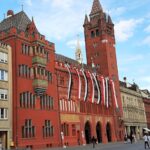Switzerland celebrated its national day on 1 August. The country has long struggled with its national anthem, flag, and Constitution. After a long unification process me t(civil) wars and other (religious) disputes from the 13th century onwards, the cooperation of and between the cantons changed on 12 September 1848. The Confederation became the Confoederatio Helvetica (CH).
The flag was not officially recognised as a national symbol until 1889. However, The history of the national anthem is even more complicated, and the discussion is still ongoing. The date of the national day is also disputed.
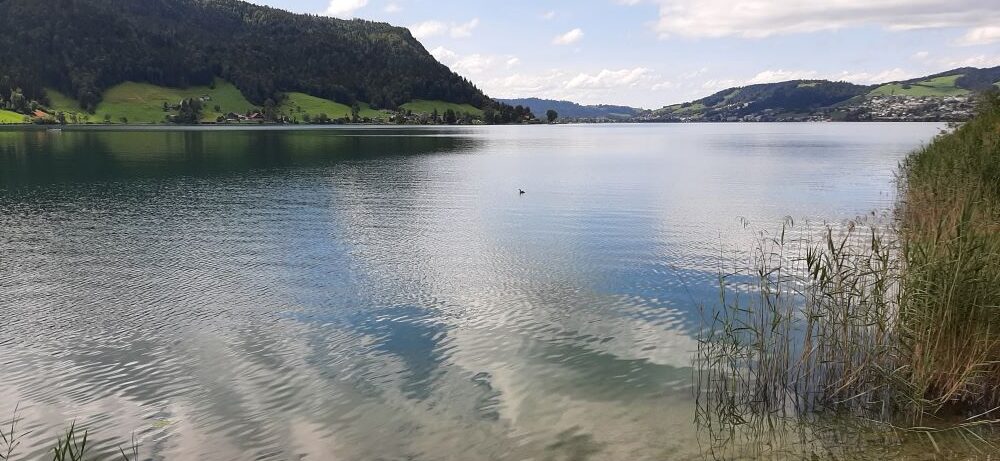
The Ägerisee

The Morgarten Chapel
1 August was recognised as the national day in 1891. The occasion was the seven-hundredth anniversary of the (mythical and at least legendary) oath, the Rütlischwur, of the first three Orte Uri, Unterwalden and Schwyz on the shores of Lake Urnersee, part of Lake Lucerne (Vierwaldstättersee).
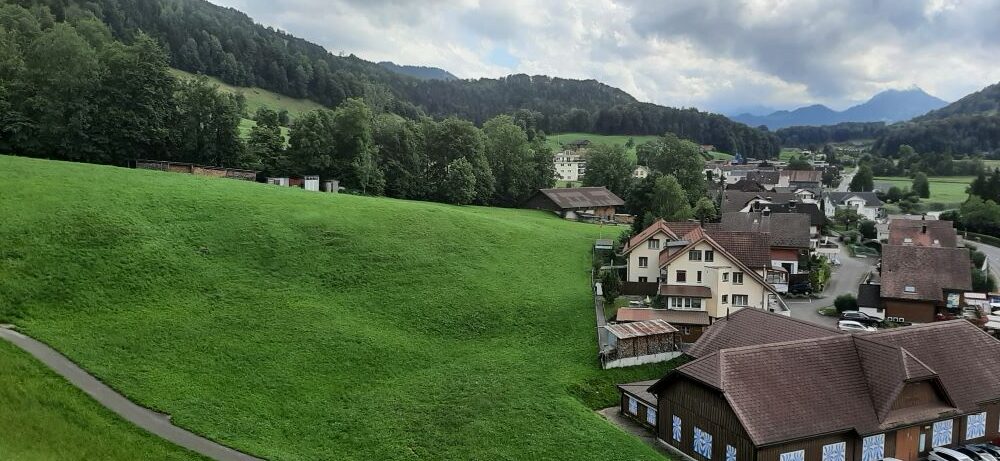
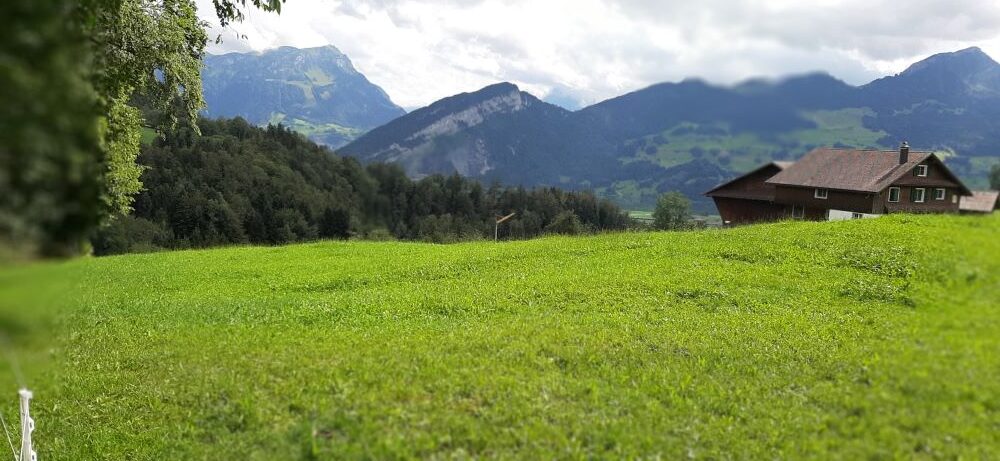
Morgarten and surroundings. The exact place of the battlefield is not known, only that it was an ambush
 Morgarten monument
Morgarten monument
The ancient Confederation
Fact, legend or myth, the reality is that in 1315, these three Orte inflicted a devastating defeat on their Habsburg lord Leopold of Habsburg (1290-1326) near the Ägerisee and the village of Morgarten (Canton Zug). Peasants defeated their lord’s knights.
This scenario repeated itself several times in 1386 (Sempach), 1388 (Näfels), 1415 (conquest of Aargau) and 1460 (conquest of Thurgau) with an ever-expanding Eidgenossenschaft or Confederation until 1499 (Schwabenkrieg, Schweizerkrieg or Engadinerkrieg depending on perspective) the Peace of Basel and the ‘Eternal Peace’ with Habsburg after this war ended.
The treaty of three Eidgenossen of 1291 (confirmed in 1315) was an alliance with 13 sovereign cantons in 1513. These cantons, apart from Freiburg/Fribourg, were German-speaking. The French invasion (1798) finally led to the Confederation of 22 cantons in 1815.
This centuries-old genesis between various language regions and culturally, religiously, politically and economically such different cantons is a kind of European Union avant la lettre. The Constitution of 1848 is still a solid political foundation.
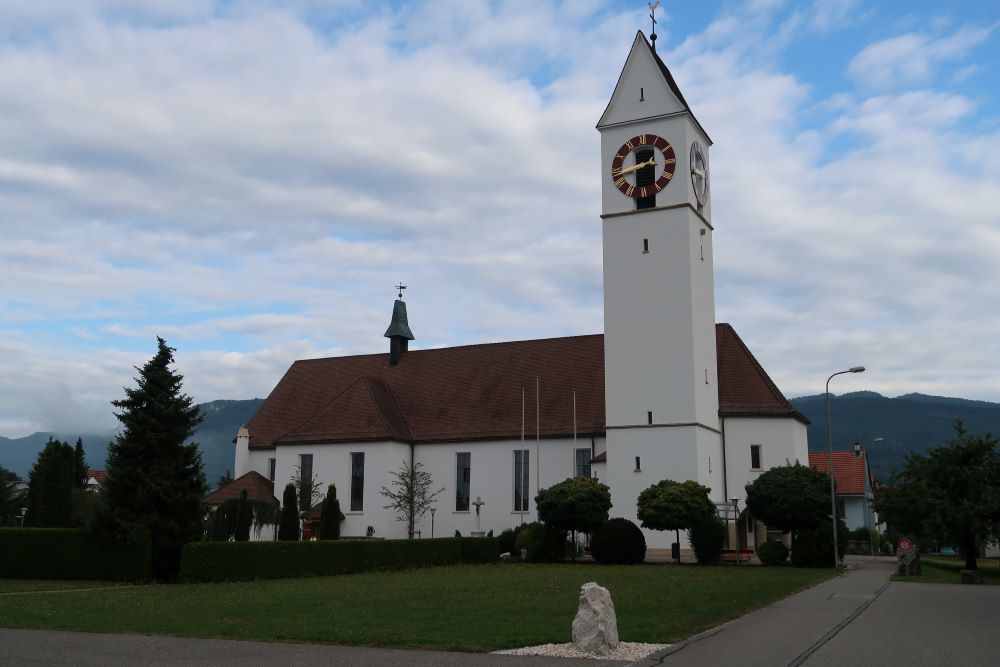
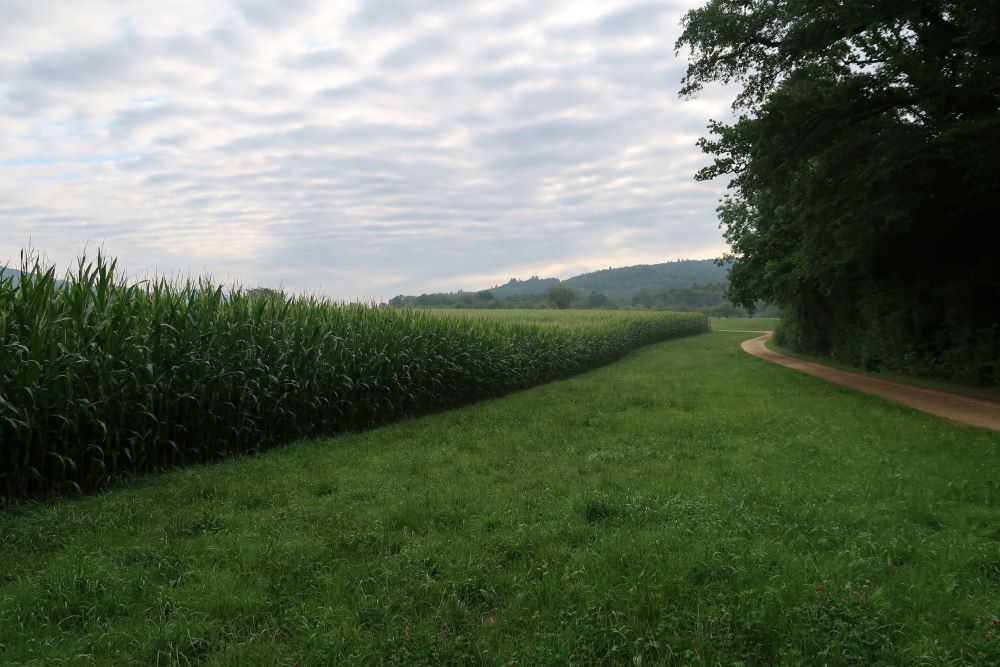
Kappel (canton Solothurn)
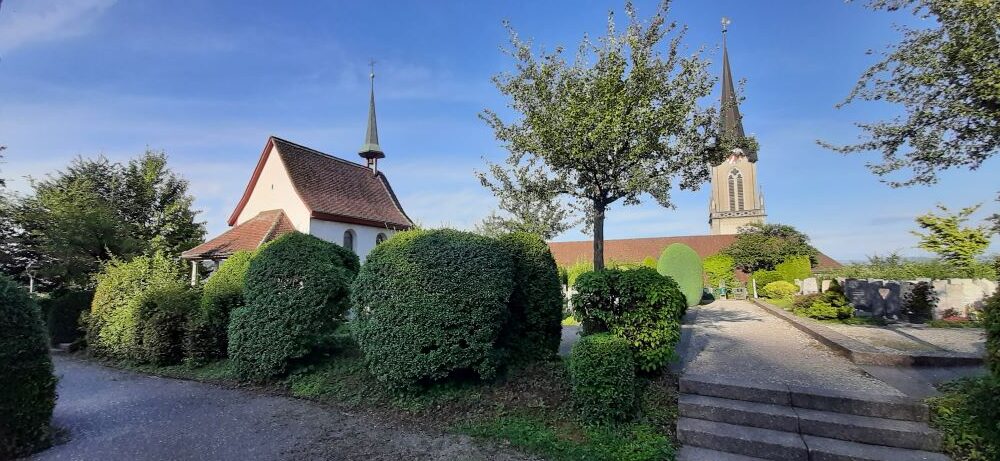

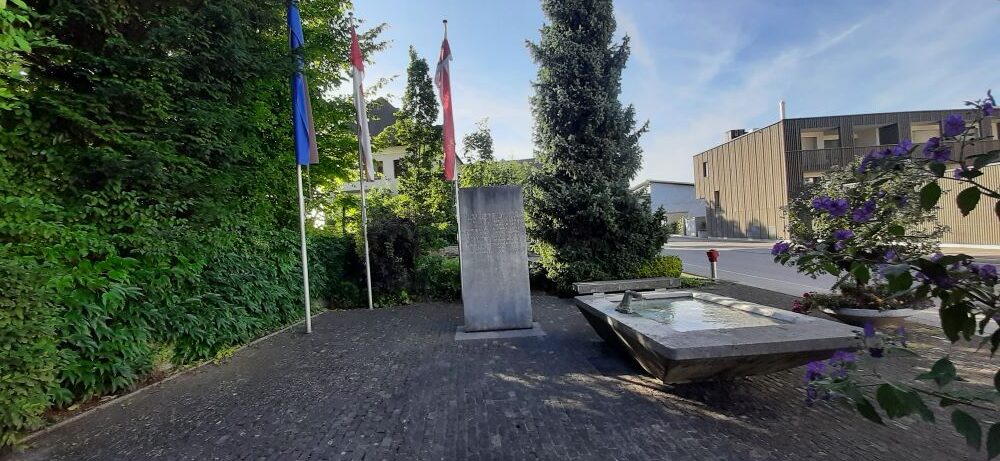
Villmergen (canton Aargau), a monument for the victims of the Villmergerkriege 1656 en 1712
It was not a foregone conclusion, and no one foresaw it in 1291, 1513, 1648 or even 1798. The Reformation also divided the old Confederation of 13 cantons after 1525. Catholic versus Protestant cantons and religious discord in cantons, towns and villages. Some armed conflicts (the Kappeler wars in 1529 and 1531), the Villmerger wars (1656 and 1712), and the Sonderbund War in 1847 resulted from this disunity.
The Bündner Wirren (1619-1639) in the Free State of the Three Leagues (Freistaat der Drei Bünde, today’s canton of Graubünden), was a religious (civil) war and a power struggle between France, Spain, Austria and Venice at the time of the Thirty Years’ War (1618-1648). However, these military conflicts were peanuts compared to (civil) wars in other regions of Europe until 1798.
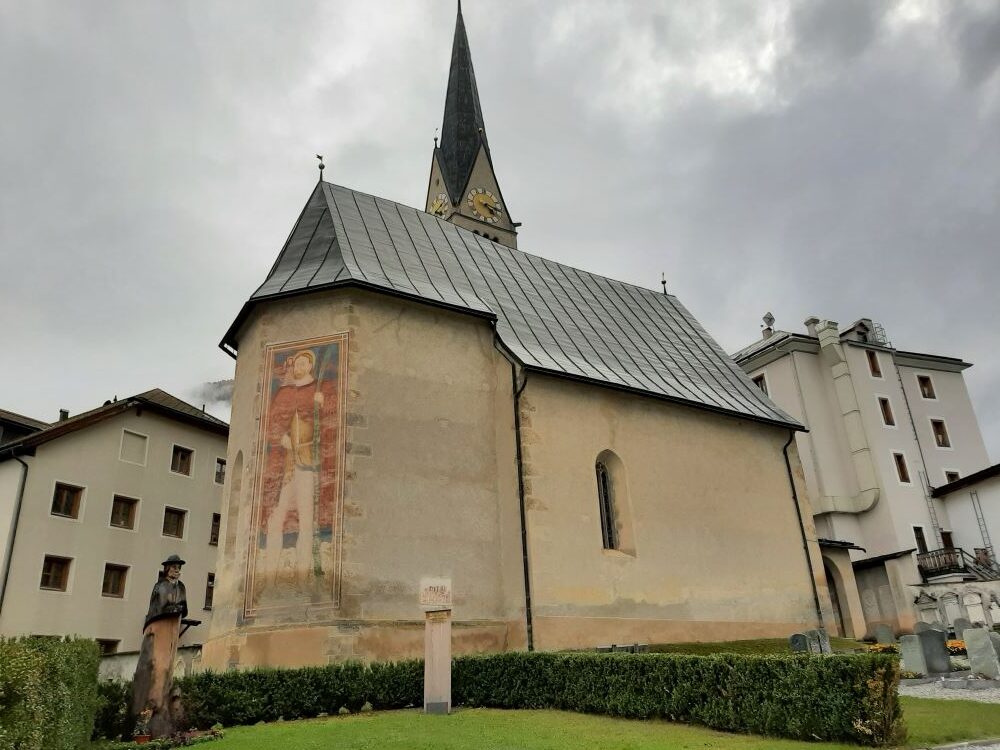
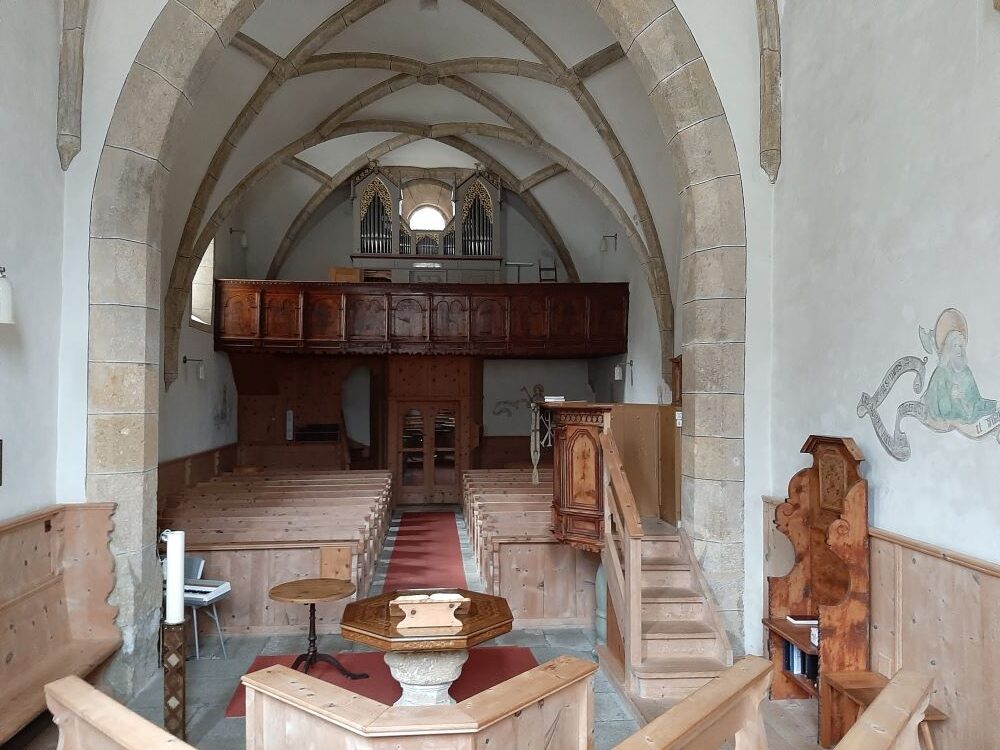
Simultaneaum in Sta. Maria (Val Müstair, canton of Graubünden, Catholics on one side, Protestants on the other).
The Old Confederation was a peaceful and neutral oasis in the middle of Europe. Religious conflicts were mostly settled democratically by citizens: churches were sometimes shared for Protestant and Catholic religions (Simultaneum), and the canton Appenzell was even split into a Catholic (Appenzell Innerrhoden) and Protestant (Appenzell Aussserrhoden) canton.
There was no democracy in a modern sense, but seven cantons and Graubünden (male) citizens aged 14 or 16 decided on policy, war or peace and the appointment of key posts in the Landsgemeinde.
Urban cantons (Bern, Zurich, Schaffhausen, Solothurn, Lucerne, Basel and Freiburg) had an oligarchic or guild-based administrative structure, but here, too, there was no dominant dynasty, personality or monarch.
In any case, the (well-to-do) citizens had much more say than in the rest of Europe, although Jews, women and non-citizens were excluded.
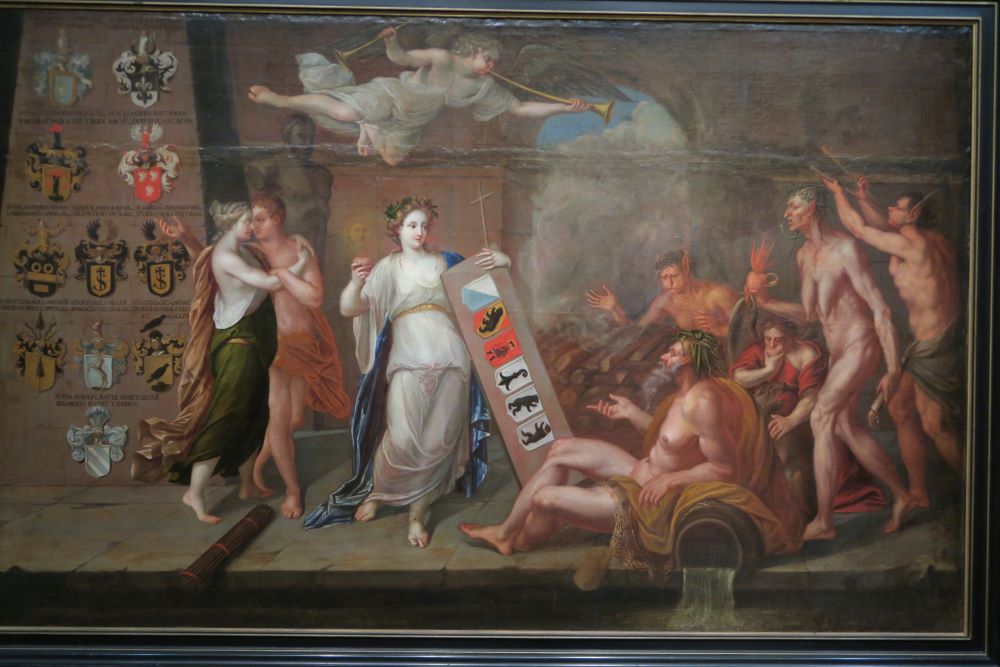
Johann Martin Veith (1650-1717), 1698: Six Protestant cantons and the ‘true religion’ and their Tagsatzung in Schaffhausen in 1698; on the right, the Catholics and their heresy. Collection: Landesmuseum Zurich
At the Tagsatzung, representatives of the sovereign cantons met regularly, mainly to discuss the administration of the occupied territories and international issues. Here, too, religion played a role. Six Protestant cantons, for instance, seceded in a separate Tagsatzung in 1698. Yet the dialogue always kept going.
Swiss Citizens, cantons and communes
However divided the cantons were, the Confederation persisted through compromise, striving for the attainable, pragmatism, and, above all, the absence of dominant personal, monarchic, and dynastic structures. These centuries of cooperation, experiences, and (international) politics in good and bad times, as well as the involvement and participation of citizens in their society, still characterise Switzerland.
The militia system in politics, administration, army and numerous mostly centuries-old Genossenschaften, Gesellschaften, associations and other social organisations express this involvement and engagement.
Traditions can lead to rigidity. What is unique about Switzerland is its adaptation and modernisation while retaining traditions.

Image: l’Office fédéral de la statistique
Melting pot, integration miracle, Schwyzertütsch and patois suisse
Switzerland has traditionally been a ‘melting pot’. In addition, many hundreds of thousands of newcomers have the Swiss pass. Moreover, many Swiss also immigrate or emigrate to other cantons. However, over 25% of residents still need a Swiss pass.
The biggest integration obstacle in the country is perhaps Swiss German, the local dialect being the language of communication in the German-speaking part of the country. For French- or Italian-speaking Swiss, who have learned and mastered Hochdeutsch, it is often an obstacle, even frustration, in communication or (political) debates.
However, French-speaking Switzerland or la Romande suisse, also had many dialects (les patois suisse) until the end of the nineteenth century, all of which have disappeared except for a few areas. French-speaking Switzerland was thus also a patchwork of dialects until 1900!

Integration and noblesse oblige
The fact that many residents do not have a Swiss pass stems from the traditionally prominent position of citizens in society and politics. Citizens are the politicians and, due to direct democracy, always (in theory) have the last word.
Swiss pass and citizenship must be earned and are not a right based on 5 or 10 years of residency or paying taxes. As a sovereign, the citizen has significant political power and duties towards society at municipal, cantonal and national levels. Noblesse oblige, and in Switzerland, the citizen is the noblesse.
Paying taxes is a fragile motivation for granting citizenship. Fortunately, the country has no purchasable ‘Golden Pass’ but citizenship based on merit. It also stems from the age-old importance of citizenship of a municipality, city, or canton.
Conclusion
The human voice is (still) decisive in Switzerland. The country’s federal, decentralised structure, which results in relatively small and accessible bureaucracies at the local level, and the involvement of and respect by (most) citizens for their environment are important factors. In addition, excellent education and good public and social services play a role.
Switzerland is not a paradise or an island and is confronted with all the problems of other European countries. It is no role model, and its decisions sometimes take time to understand for foreigners (and Swiss)—the current neutrality debate, for example. However, its long-term course deserves serious attention, respect, and appreciation.
Switzerland may not be the happiest country in the world, but its citizens are still the country’s heart, spirit and soul. The English historian Edward Gibbon (1737-1794), a great but not uncritical admirer of the old Confederation, devoted a book to it in 1767 ‘Introduction à l’histoire Générale de la République des Suisses’ (Die Freiheit der Schweizer, Zurich 2015).
And so it still is. This is also evident in the subdued, stylish, and festive celebration, with always a local touch of the national day. After all, the municipalities’ cantons and citizens are sovereign. The country, society, and the many newcomers benefit from it.
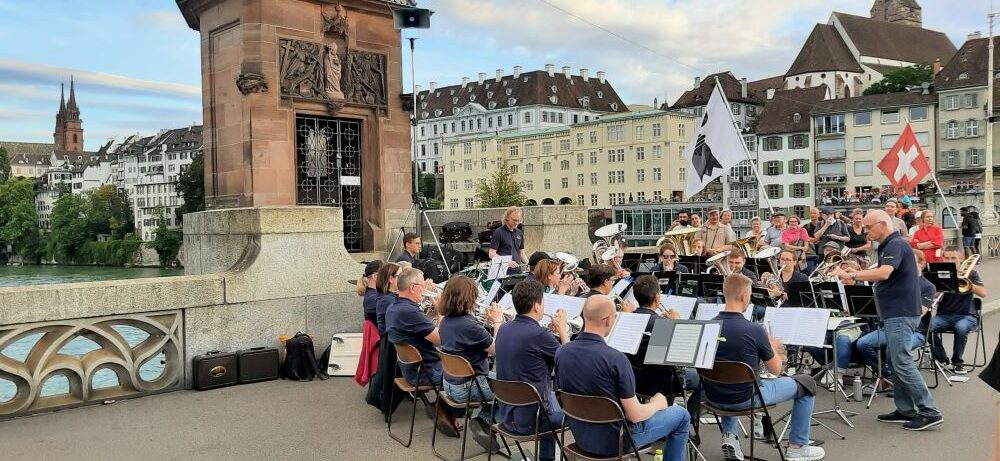
Basel, August first, the Mittlere Brücke

